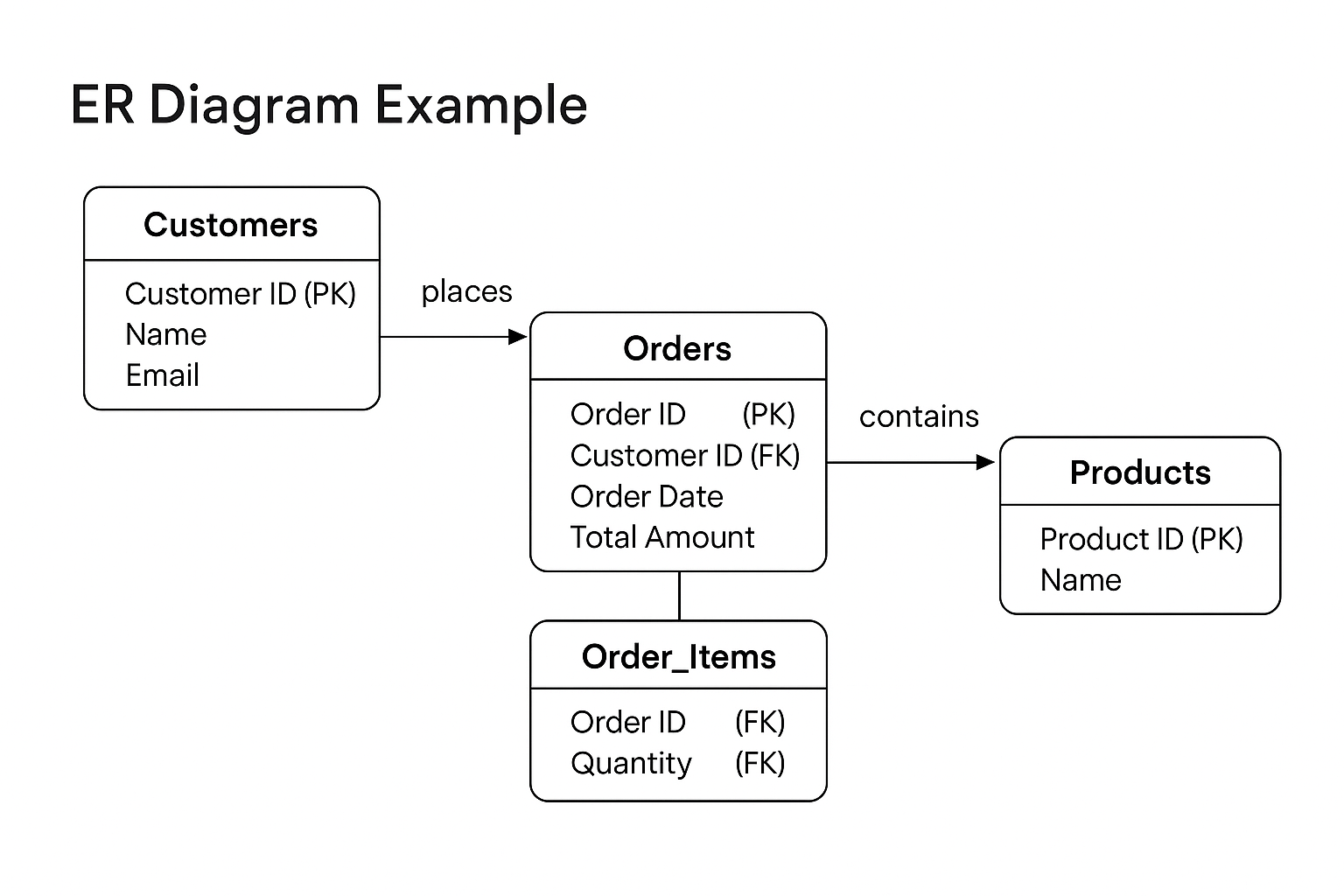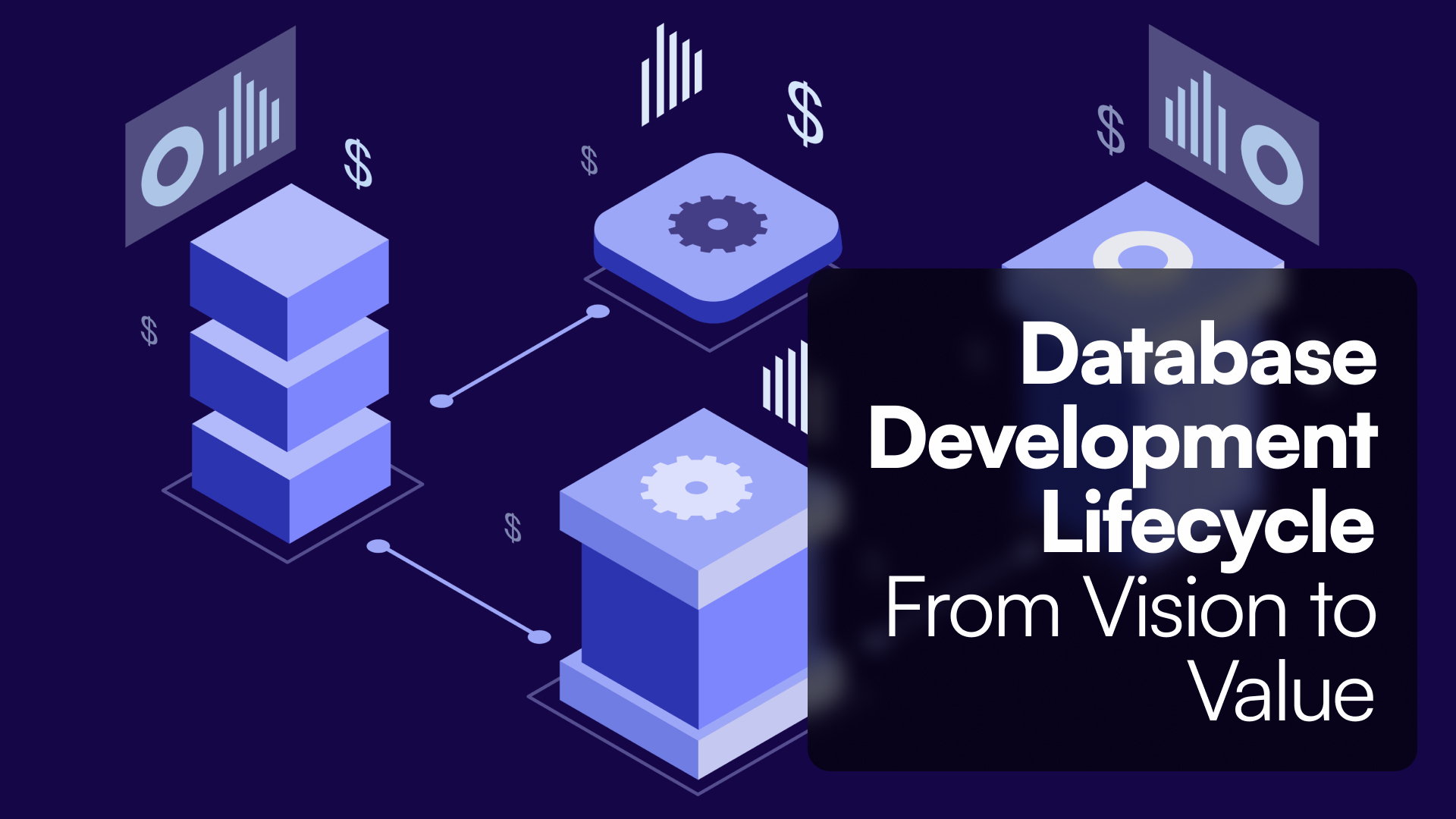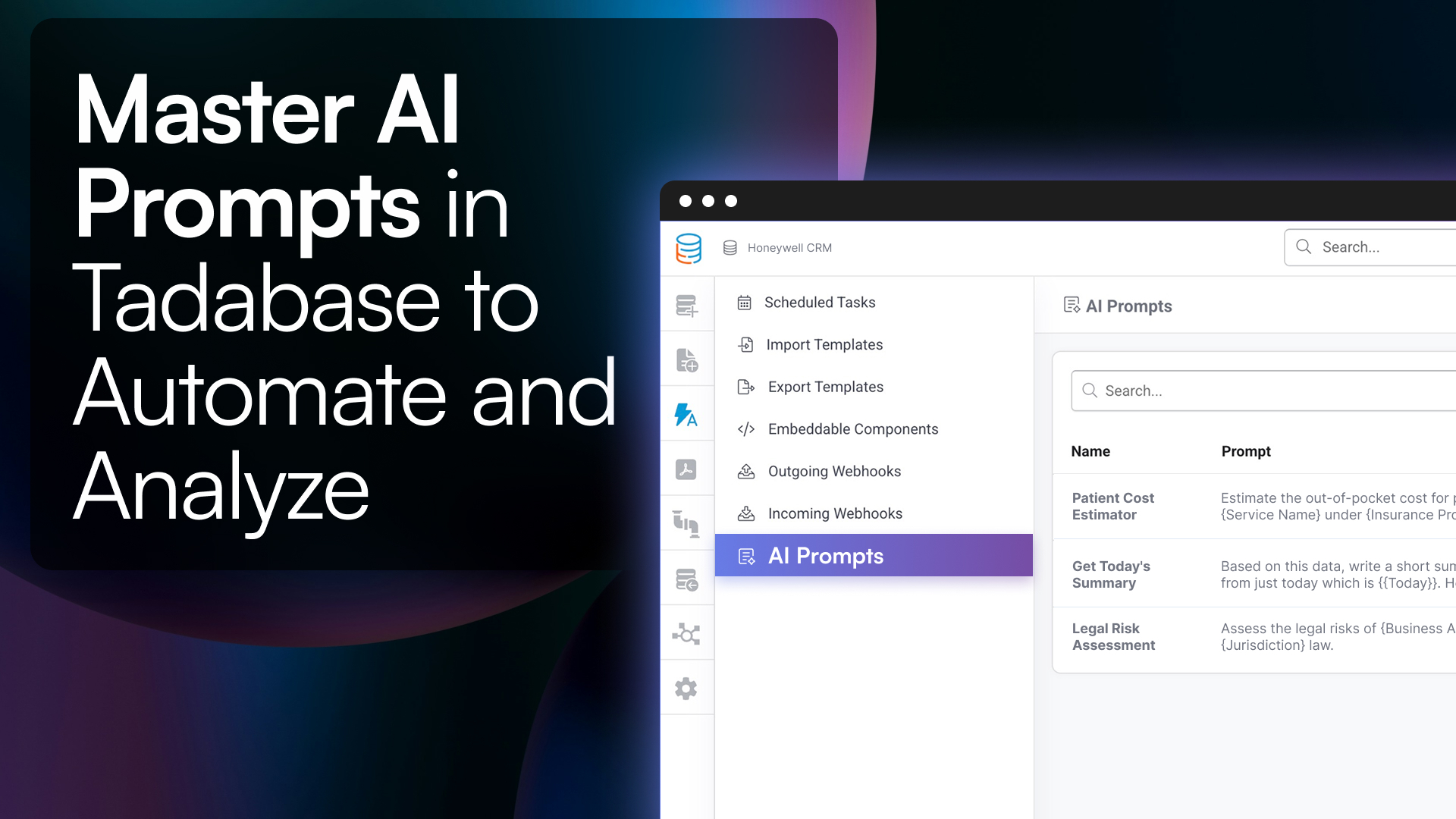Introduction
When you think about database design, imagine it like the blueprint of a building. A well-designed database is the foundation that keeps your business operations running smoothly, allowing you to manage data, connect workflows, and grow without hitting roadblocks. Whether you’re building a simple app or a complex enterprise system, the structure of your database determines how efficient and scalable it will be.
At Tadabase, we believe that database design doesn’t have to be complex. In fact, our platform is designed to make the entire process intuitive, allowing you to build custom databases that adapt to your business—without needing to write code.
Let’s dive into what makes a strong database design, the key principles to follow, and how Tadabase can help you design one that’s both flexible and powerful.
What is Database Design?
Database design is all about organizing data in a way that’s easy to store, retrieve, and manage. Just like you wouldn’t randomly stack books in a library, you can’t throw data into a database without a plan. A well-designed database ensures that your information is structured logically, preventing redundancies and making it easier to scale as your business grows.
Think of it like building a filing system. You want to ensure each piece of information is in its proper place, easy to access, and related to other important pieces in meaningful ways.
On Tadabase, database design is made simple with tools that guide you through the process, allowing you to focus on the bigger picture—your business operations. For more tips on getting started, check out our blog on workflow automation, which shows how you can use automation to streamline database processes.
Database Design Best Practices: Key Principles to Follow
A solid database design follows certain key principles. These ensure that your database is not only functional today but remains efficient and scalable as your business grows and evolves.
1. Data Integrity
This is about ensuring that your data is accurate and consistent. A database with good integrity prevents duplicates, inconsistent data, and errors that can throw your entire system off. For example, with Tadabase’s relationship builder, you can ensure that every record is linked correctly across tables—minimizing the risk of inaccuracies.
2. Scalability
Your database should grow as your business grows. Tadabase's flexible structure allows you to expand your database without hitting performance issues. Whether you're handling thousands of records or millions, the platform is designed to scale smoothly. You can explore more about scaling effectively with Tadabase in our post on minimizing tech debt.
3. Flexibility
Business needs evolve, and so should your database. Tadabase makes it easy to adapt your database design on the fly, adding new fields, relationships, or even entirely new tables without having to start from scratch.
4. Performance
A well-designed database should load quickly and handle large volumes of data efficiently. Tadabase’s back-end optimization ensures that even complex queries run smoothly, giving you fast access to the data you need.
Types of Database Models
Before diving into the design process, it's important to understand the different types of database models. The model you choose will depend on your specific business needs.
1. Relational Model
The relational model is the most common and organizes data into tables (or "relations"). Each table has rows and columns, and data in one table can be related to data in another using keys. This model is perfect for businesses with structured data—like customer databases, inventory systems, or sales records.
2. Hierarchical Model
In this model, data is structured in a tree-like format, where each record has a parent/child relationship. While not as commonly used today, it can be useful for specific use cases like file management systems.
3. Network Model
Similar to the hierarchical model but with more complex relationships, the network model allows multiple parent-child relationships. This is ideal for more complicated systems with many-to-many relationships.
With Tadabase, you don’t have to stick rigidly to one model. The platform lets you design databases that incorporate different models depending on your needs, all while maintaining ease of use.
When to Use NoSQL vs Relational Database Design
If your application deals with unstructured or semi-structured data (e.g., IoT devices, user activity logs, or real-time analytics), a NoSQL approach may offer better flexibility and speed. However, for transactional systems with strict relationships—like CRMs, inventory systems, or financial apps—a relational model is typically more secure and scalable.
Tadabase is built on a relational model, making it ideal for structured data and complex relationships. You can still design flexible, custom systems without code—while benefiting from the reliability of relational design.
Relational vs NoSQL: Quick Comparison
Common Pitfalls in Database Design (and How to Avoid Them)
Even the most experienced developers can run into issues when designing a database. Here are some common pitfalls and how you can avoid them with Tadabase:
1. Over-Normalization
Normalization is the process of organizing your data to reduce redundancy. But too much normalization can make your database overly complex, leading to performance issues. With Tadabase, you can strike the right balance between normalization and performance by using relationships smartly and simplifying your schema as needed.
2. Poor Planning for Scalability
A database that works for 1,000 records might not work for 100,000 records. It’s important to design your database with future growth in mind. Tadabase makes scalability easy by offering tools to restructure and expand your database without major overhauls.
3. Lack of Indexing
Without proper indexing, your database will slow down as it grows. Indexing allows the database to find data faster. Tadabase automates much of the indexing process, ensuring your data remains accessible and quick to query, even as your database expands.
By using Tadabase, you can avoid these common mistakes and build a database that’s resilient and high-performing from day one.
Practical Steps to Designing a Database on Tadabase
Now that we’ve covered the theory, let’s look at how you can design a database using Tadabase.
1. Start with Your Data
The first step is identifying what types of data you need to store. Think about the core entities your business revolves around—customers, orders, products, or any other specific data points. Once you’ve identified your key entities, Tadabase’s drag-and-drop builder allows you to easily create tables to hold this information.
Designing a database schema starts with identifying the core entities your system will manage. Whether you're building for customers, products, or internal workflows, Tadabase makes it easy to learn how to design a database schema with its visual builder and built-in logic tools.
To learn more about creating and managing data tables, check out the detailed guide here.
Example of a Database Schema
Here’s a simplified schema for a customer order management app:
-
Customers Table
-
Customer ID (Primary Key)
-
Name
-
Email
-
-
Orders Table
-
Order ID (Primary Key)
-
Customer ID (Foreign Key)
-
Order Date
-
Total Amount
-
Each order is linked to a customer via the Customer ID. This is the foundation of most transactional systems—and is easy to build in Tadabase using visual relationships.
2. Create and Manage Fields
Within each table, you’ll need to define fields that hold specific information. For example, a “Customer” table might have fields like Name, Email, Phone Number, etc. Tadabase provides flexible field types—text, number, dropdown, and more—so you can customize your database structure to perfectly fit your needs.
For a detailed walkthrough of managing fields within tables, visit this guide.
3. Define Relationships
This is where the magic happens. Relationships define how data in one table relates to data in another. For example, an order should be linked to the customer who placed it. With Tadabase, defining these relationships is as simple as dragging a line between tables, with no need for SQL queries or complex configurations.
Creating relationships, or connections as they are called in Tadabase, ensures that your data is structured efficiently and logically.
For more information on setting up these connections, check out this guide.
ER Diagram Example
4. Optimize for Performance
Once your database is designed, performance optimization is key, especially as your data grows. Tadabase helps you optimize with built-in performance tools like indexing, which speeds up search and retrieval times. Whether you're dealing with thousands or millions of records, Tadabase ensures that your data remains easy to access and fast to query.
Review Highlight
"Database development made easy"
Overall:
"10/10 rating for all measures. This is not first impressions, this is my rating after 12 months of use as a real Tadabase customer. If you are looking to create a low cost, high security and feature rich web enabled database solution for your business and you don't know anything about coding ( software programming ) then i highly recommend you try Tadabase."
Pros:
"The development tool and features are very easy to use to create web enabled ( WebApp) database systems without coding. Wide selection of Tadabase ready-made templates are free and make the whole development process even more quicker. I used the school management template which saved me huge amount of work as I was able to easily edit each component to my requirements. The rapid table creation from pasted data is very impressive. The customer support has been fantastic over the last 12 months. Tadabase is best value for money when compared to Quickbase, Caspio and PowerApp. I have been using all of these alternatives products for over 5 years and can honestly say Tadabase comes out top on all measures and this is the reason why i have decided to stop looking elsewhere and to stick with Tadabase."
— Shuhon H. Database Systems Developer • Information Technology and Services, Self-employed
Conclusion
A well-designed database is the backbone of any successful business. Whether you’re managing customer data, tracking inventory, or streamlining workflows, getting your database design right from the start will save you headaches down the road.
Whether you're managing data for a large enterprise or running a small business, proper database design is the key to long-term success. Tadabase is especially ideal for small businesses—offering flat-rate pricing, fast setup, and enterprise-level features without the need for a developer or IT team.
With Tadabase, database design doesn’t have to be daunting. Our platform allows you to build powerful, flexible, and scalable databases without writing a single line of code.
Sign up for Tadabase todayStart creating in minutes.
Frequently Asked Questions
What is database design, and why is it important?
Database design is the process of structuring and organizing data so that it can be efficiently stored, retrieved, and managed. A well-designed database ensures data integrity, reduces redundancy, and improves scalability. Without proper design, a database may become slow, difficult to manage, and prone to errors, which can severely impact business operations and decision-making.
What are the key principles of database design?
The key principles of database design include:
- Data Integrity: Ensuring data accuracy and consistency across the database.
- Normalization: Reducing redundancy by organizing data into related tables.
- Scalability: Designing the database to handle growth in data volume efficiently.
- Performance Optimization: Structuring data for fast queries and retrievals.
- Flexibility: Allowing for future changes or additions without major overhauls.
What is the difference between a relational database and other types of databases?
A relational database organizes data into tables (or relations) where each table contains rows and columns. Tables can be related to one another using keys (like a primary key or foreign key). This model is popular due to its flexibility and ability to efficiently handle structured data, such as customer databases or inventory systems.
Other types of databases include:
- Hierarchical databases: Data is organized in a tree-like structure with parent-child relationships.
- Network databases: A more complex model where data can have multiple parent-child relationships.
- NoSQL databases: A flexible, scalable alternative to relational databases, often used for unstructured or semi-structured data.
What are some common mistakes to avoid in database design?
Common mistakes in database design include:
- Over-Normalization: Breaking data into too many small tables, which can lead to overly complex queries and performance issues.
- Under-Normalization: Storing redundant data in one table, which can lead to data inconsistency and bloat.
- Lack of Indexing: Failing to index critical columns can slow down data retrieval significantly.
- Poor Planning for Growth: Designing the database without considering future scalability can lead to bottlenecks as data volumes increase.
- Inadequate Documentation: Not documenting design choices or data relationships can create challenges when the database needs updating or troubleshooting.
How does normalization improve database design?
Normalization is the process of organizing data in a database to reduce redundancy and dependency. The goal is to break down large tables into smaller, related tables, ensuring that each piece of data is stored only once. This improves data integrity and makes the database easier to maintain and scale. For example, rather than storing a customer’s name in every order record, normalization would place the customer’s information in a separate table, linking it to the orders through a unique customer ID.
What are primary keys and foreign keys in a database?
- Primary Key: A primary key is a unique identifier for each record in a table. It ensures that each row can be uniquely identified. No two rows can have the same primary key.
- Foreign Key: A foreign key is a column in one table that links to the primary key of another table. This creates a relationship between the two tables, allowing data to be referenced across the database.
For example, in a sales database, the Customer ID in the "Orders" table would be a foreign key that references the primary key Customer ID in the "Customers" table.
What is database scalability, and why is it important?
Scalability refers to the database’s ability to handle increasing amounts of data or traffic without significant drops in performance. A scalable database can grow with your business, whether that means handling more users, more transactions, or larger datasets. Proper database design ensures that your system can accommodate future growth without requiring significant redesigns or performance degradation.
How can I optimize my database for performance?
To optimize a database for performance:
- Indexing: Create indexes on frequently queried columns to speed up data retrieval.
- Query Optimization: Write efficient SQL queries that retrieve only the necessary data, avoiding large, unnecessary scans of the database.
- Data Partitioning: Split large datasets into smaller, more manageable pieces, improving query performance.
- Denormalization: In cases where performance is more critical than strict adherence to normalization, you may combine tables to reduce the complexity of joins.
- Caching: Use caching to store frequently accessed data in memory, reducing the load on the database.
How do I design a database that can handle large volumes of data?
To design a database that can handle large volumes of data:
- Plan for Growth: Use scalable models like relational or NoSQL databases depending on your data needs.
- Partition Data: Divide large tables into smaller, more manageable sections (e.g., partitioning data by date or region).
- Use Indexes Wisely: Index high-traffic columns, but avoid over-indexing, which can slow down insert and update operations.
- Consider Denormalization: In some cases, denormalizing the database can improve performance for read-heavy workloads.
- Regular Maintenance: Periodically review and update your database, removing unused data and re-indexing where necessary.
What tools can I use to design and manage my database?
Several tools can help you design and manage your database effectively:
- Tadabase: A no-code platform that allows you to design, build, and scale databases with ease, providing flexibility for both beginners and advanced users.
- Lucidchart: A tool for creating database diagrams that help visualize data relationships.
- SQL Server Management Studio (SSMS): For managing and designing databases in Microsoft SQL Server.
- MySQL Workbench: A visual tool for designing and managing MySQL databases.
- Vertabelo: An online tool for visual database design, especially useful for designing relational databases.
What is the role of automation in database design?
Automation plays a crucial role in database management by helping automate routine tasks like backups, performance tuning, and monitoring. In the design phase, automation tools like Tadabase’s Pipes and Databridge can help streamline workflows, reducing the need for manual intervention in repetitive tasks. Automation ensures that your database runs efficiently with minimal manual oversight.
How can I ensure my database design supports future flexibility?
To ensure flexibility in your database design:
- Use a Modular Approach: Design the database in a way that allows for easy expansion by adding new tables or fields without major restructuring.
- Abstract Data Relationships: Keep relationships flexible by using foreign keys and avoiding hard-coded relationships.
- Use Flexible Field Types: Choose field types that can adapt to future needs (e.g., using text fields for data that may need to store various types of information in the future).
- Document Everything: Keeping detailed documentation of your design decisions and database structure makes it easier to update and modify in the future.
What are ER diagrams, and how do they help in database design?
Entity-Relationship (ER) diagrams are visual representations of the relationships between entities in a database. They help in planning the structure of a database by showing how different data entities (e.g., customers, orders, products) are related. ER diagrams are a valuable tool in the design phase, making it easier to understand and communicate the overall structure of a database before building it.
How can I test my database design before implementation?
Testing your database design before full implementation can save time and prevent errors. Some ways to test include:
- Creating Sample Data: Populate your database with sample data to check how relationships work, whether queries return expected results, and how performance scales with larger datasets.
- Use Queries: Write test queries to ensure data retrieval is efficient and logical based on your relationships and schema.
- Run Performance Tests: Simulate larger datasets or higher traffic volumes to identify potential bottlenecks or areas for improvement.
How can I maintain data security in database design?
Ensuring data security in database design involves several practices:
- Use Access Controls: Restrict access to the database using roles and permissions, ensuring only authorized users can view or modify sensitive data.
- Encrypt Data: Store sensitive data in encrypted formats, both in transit and at rest.
- Implement Regular Backups: Ensure that your data is backed up regularly and securely, with disaster recovery plans in place.
- Audit Logs: Use logging to track changes or access to sensitive data, so you can quickly identify and address any unauthorized access.
How do I design a database schema?
Designing a database schema involves identifying the main entities your business interacts with (like Customers, Orders, Products), organizing them into tables, defining fields for each, and establishing relationships using primary and foreign keys. Tools like Tadabase make this process visual and intuitive, so you can build your schema without writing code.









